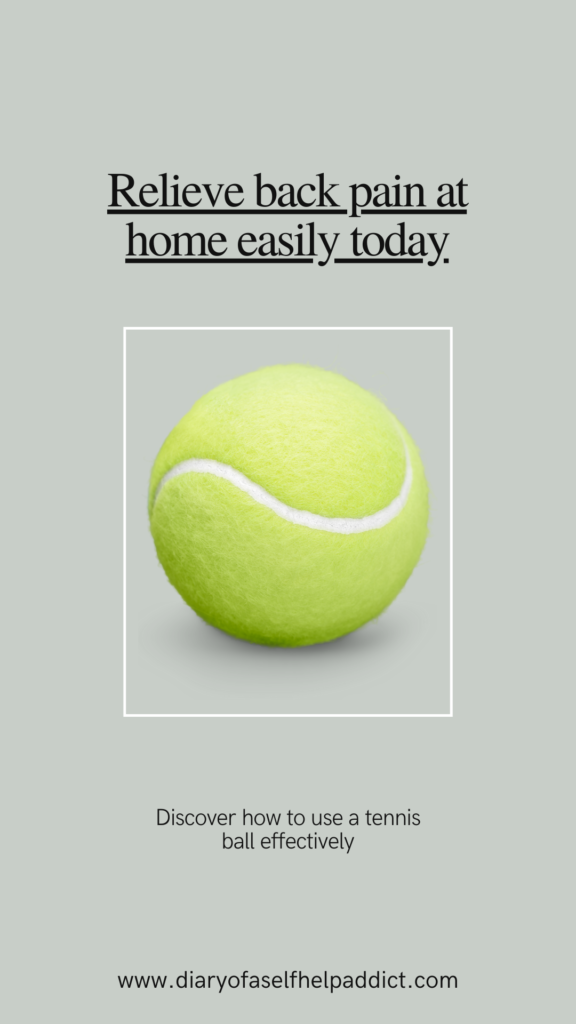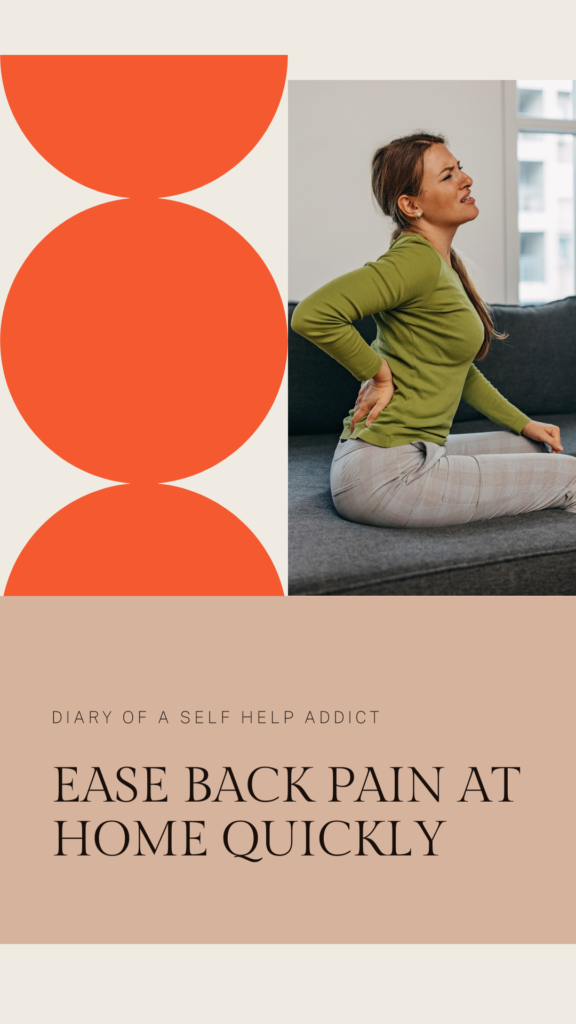
Back pain is a common complaint, whether from sitting too long, lifting something incorrectly or simply the result of daily wear and tear. While there are various treatments, one incredibly effective method for alleviating both upper and lower back pain is myofascial release using a tennis ball. You don’t need fancy equipment or costly therapies—just a tennis ball and a few minutes of your time. In this blog post, we’ll explore how to use this simple tool to relieve upper and lower back tension and why myofascial release is a game-changer for your overall well-being.
Be sure to check out my two short but highly effective YouTube videos for step-by-step guidance:
What is Myofascial Release?
Before diving into the “how-to,” it’s essential to understand what myofascial release actually is. The term “myofascial”refers to the muscles (“myo”) and the connective tissues (“fascia”) that surround and support them. When muscles are overused or stressed, the fascia can become tight and form what is known as a trigger point or “knot.” These points can cause discomfort in the localized area and other parts of the body, resulting in what is often called referred pain.
Myofascial release is a technique that involves applying gentle but sustained pressure on these trigger points to relieve tension and restore movement to the muscles and fascia. The goal is to eliminate pain and restore motion by relaxing contracted muscles, improving blood flow, and stimulating the muscle-stretch reflex.
Why Use a Tennis Ball for Back Pain?
Using a tennis ball for myofascial release is an excellent home remedy for pain because it allows you to apply targeted pressure directly to areas of discomfort. A tennis ball is versatile, portable, and firm enough to offer adequate pressure without being too hard, which could cause more harm than good.
Here’s why a tennis ball is an excellent tool for relieving back pain:
- Customizable pressure: You control the amount of pressure applied by adjusting how much weight you place on the ball.
- Targeted relief: You can precisely pinpoint specific areas, such as trigger points in the upper or lower back.
- Convenience: It’s an easy and affordable solution that can be used anytime and anywhere.
- Versatility: You can use it for your back and other muscle groups, such as the shoulders, glutes, and hips.
Benefits of Myofascial Release
The advantages of myofascial release go beyond just pain relief. Here are some of the broader benefits:
- Pain Reduction
The primary goal of myofascial release is to reduce pain, and it’s particularly effective for muscle soreness, tightness, and stiffness. Trigger points in the fascia can restrict muscle movement and cause discomfort in seemingly unrelated areas of the body. Releasing these knots can alleviate pain at the source and in referred regions.
2. Improved Flexibility and Range of Motion
Tight fascia restricts muscle movement, which can result in poor flexibility and a limited range of motion. Myofascial release helps to improve both by releasing tension. This can be especially beneficial for people who sit for long periods, as sitting tends to shorten muscles and tighten fascia in the back, hips, and hamstrings.
3. Enhanced Blood Circulation
Applying pressure to trigger points improves blood flow to the affected muscles, which in turn helps promote healing. Increased circulation brings nutrients to the tissues and removes metabolic waste products, reducing inflammation and speeding up recovery.
4. Stress Reduction
Physical stress often translates into mental stress. Chronic muscle tension can elevate stress hormones like cortisol. Myofascial release also helps reduce stress levels, which can have a positive impact on overall mental health.
5. Injury Prevention
Keeping your muscles and fascia healthy through regular myofascial release can help prevent injuries. When your muscles are loose and flexible, you’re less likely to experience strains, sprains, or overuse injuries. This is particularly important for athletes or individuals with an active lifestyle.
6. Self-Care and Convenience
The best part? You don’t need to go to a physical therapist or a massage therapist to benefit from myofascial release. You can do it at home, on your schedule, with minimal equipment.
Related Read: Discover the Rossiter Stretching Technique: A Path to Pain Relief
How to Use a Tennis Ball for Upper Back Pain
Tightness in the upper back is often the result of poor posture, stress, or repetitive movements such as typing on a keyboard or looking down at your phone. Myofascial release using a tennis ball can help loosen the fascia and reduce muscle tension in this area.
Follow these steps to target upper back pain:
- Position the Tennis Ball: Stand against a wall and place the tennis ball between your upper back and the wall. Alternatively, you can lie on the floor for more intense pressure.
- Find Your Trigger Points: Slowly move your body so the ball rolls over your upper back muscles. When you find a tender spot (trigger point), stop and hold the ball in that area.
- Apply Pressure: Hold the ball on the trigger point for 30-60 seconds or until the discomfort decreases.
- Add Arm Movements: Move one or both arms in various directions to contract and release the upper back muscles, thereby adding to the release work.
- Roll Gently: After applying sustained pressure, gently roll the ball around the area to release tension.
- Repeat: You can do this several times daily to relax muscles.
Check out my YouTube video on myofascial release for shoulders for a visual demonstration of using the tennis ball to relieve shoulder and upper back pain.
How to Use a Tennis Ball for Lower Back and Hip Pain
Lower back pain often comes from tightness in the hips, glutes, and hamstrings. These areas can hold a lot of tension, especially if you sit for long periods.
Here’s how to relieve lower back pain using a tennis ball:
- Position the Ball Under Your Glutes: Lie on the floor or a yoga mat with your knees bent. Place the tennis ball under one buttcheek, targeting any tight or tender spots. You may need to place a “shim,” like a folded towel, under the opposing glute to remain level. Side note: you can put the ball under your back; however, low back tension often comes from tight glute or thigh muscles, so targeting that area is usually more effective.
- Relax and Breathe: Let your body relax into the ball, and take slow, deep breaths to help the muscles release.
- Add leg movements: Move the leg (on the same side where the ball is placed) in all directions to contract and release the muscles. For instance, with bent knees, internally and externally rotate the hips, lift and lower the leg, or circle the leg.
- Stay on a Spot: Hold the ball on tight areas for 30-60 seconds until you feel a release. Don’t rush the process.
- Repeat Daily: Regular use can prevent further pain and keep muscles relaxed.
Watch my YouTube video on myofascial release for the hips and lower back for a step-by-step visual guide.
Final Tips for Using a Tennis Ball
- Go Slow: Myofascial release should be done slowly to give your body time to respond to the pressure.
- Listen to Your Body: Stop if you feel sharp pain or discomfort beyond the normal pressure.
- Consistency is Key: Regular practice will provide the best results, like any form of self-care.
- Stay Hydrated: Fascia can become dehydrated, leading to tightness, so drink plenty of water before and after your sessions.
Wrapping It Up
Incorporating myofascial release into your daily routine using a simple tennis ball can have profound effects on your back pain, flexibility, and overall health. It’s a convenient, low-cost solution that empowers you to take control of your pain management from the comfort of your home. Give it a try, and don’t forget to check out my YouTube videos for a more detailed, guided experience.
With consistent practice, you’ll find relief from back pain and improve your overall well-being—one tennis ball at a time.
Pin it for later


I needed this post! I will have to get me a tennis ball! My back has been killing me.